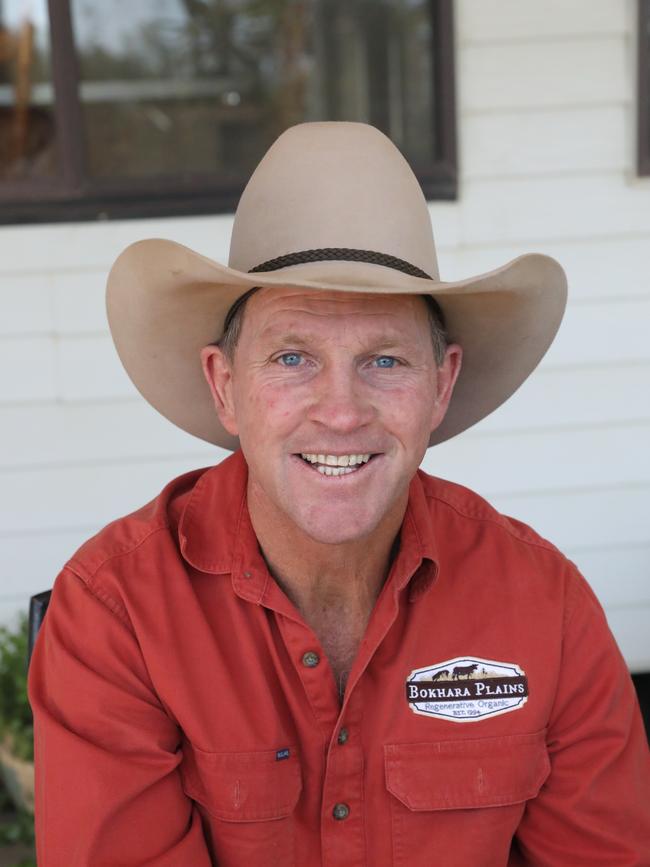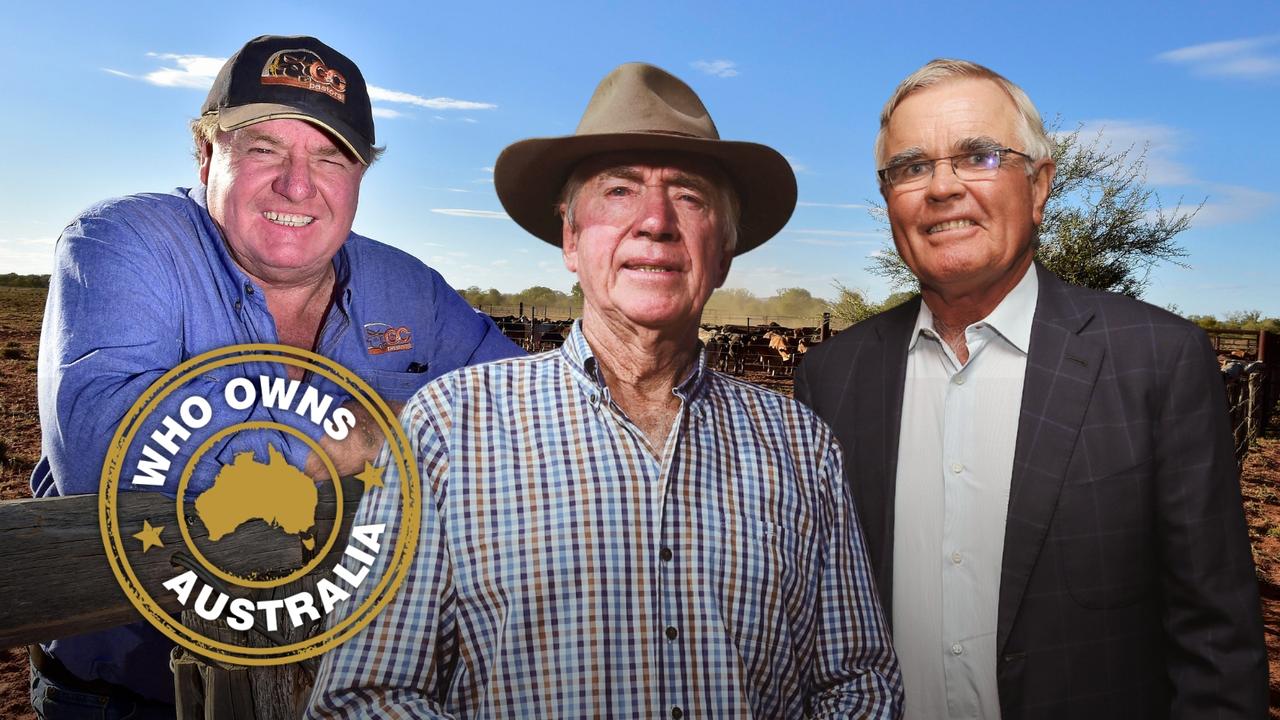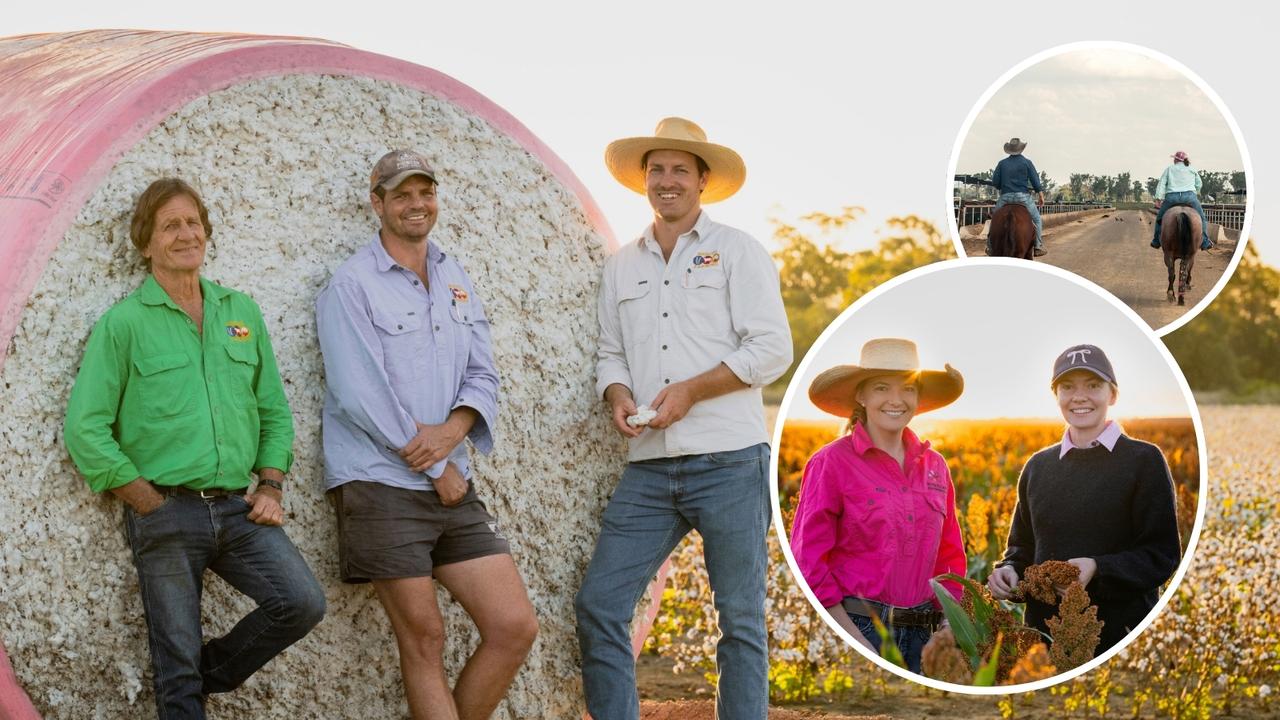Alasdair MacLeod, Soils for Life, Morris Group: Big players back regenerative farmers
Major investors are showing interest in large-scale “regen” ag operators who are improving ecological outcomes, profitably. Here’s why.
The word “green” may not pop to mind when thinking about the landscape surrounding Brewarrina in Far West NSW.
But don’t be fooled by its earthy tones.
In years of good rain, when the rangelands bounce back to life and acacias, Mitchell grasses and saltbush show off their true colours, it’s easy to see the region is home to one of the richest ecosystems in Australia.
And local farmers are playing a huge role in encouraging that biodiversity through regenerative practices that are improving the natural ecosystem and vegetation while also maintaining productive and profitable businesses.
About 35 kilometres north of Brewarrina, Graham and Cathy Finlayson and their daughter, Harriet, run Bokhara Plains, a 9200-hectare grazing property where they and their livestock are working to build soil health, water and nutrient cycling, and biodiversity.

Often receiving less than the region’s average 380mm of rain a year, the property is in one of the nation’s driest corners. Rejuvenating it has been a “fascinating” learning experience that has pushed Graham and Cathy to the limits, but also turned them into highly skilled land managers.
“We’ve learned how to manage animals better, we’ve learned how to manage the landscape better and manage our business better,” says Graham Finlayson, who started investigating alternative management ideas as the millennium drought took hold in 2000.
Back then the concept of “regenerative agriculture” was barely a whisper in Australia, and not really talked about in mainstream farming circles.
Coined by US not-for-profit Rodale Institute in the 1980s, regenerative is a farming approach that goes one step beyond “sustainable” to encourage continuous improvement of environmental, social and economic measures.
“It is quite often said that farmers care more about the land than anyone else and that’s true to an extent, but a lot of us didn’t know what you needed to do to improve things,” 56-year-old Finlayson explains. “So you become a victim of circumstances.
“Once we realised that we could actually improve conditions … it was a very big and positive mind shift. And once you start it just opens up a new world.”
A smorgasbord of techniques fall under the “regenerative agriculture” umbrella today – some are new and others as old as the hills.


Holistic management created by Zimbabwean grazier Allan Savory; the layered-enterprise approach of American Joel Salatin; the Landcare-endorsed practice of fencing off and revegetating waterways; planting trees; no-till cropping; using green manures and composts; retaining stubble; reducing or eliminating synthetic chemicals. And things have changed dramatically since the early 2000s, when “regen” operators were more likely to draw ridicule than investment.
Industry, asset management and not-for-profit groups such as Soils for Life have started popping up across Australia to support and incentivise farmers who want to apply the techniques in their operations. Soils for Life chief executive Eli Court says the term may have alienated some farmers in the past, but it is increasingly being considered by large-scale operators and also attracting investment.

Finlayson says every farm environment is unique, so the tools that drive improvement on one property may be different to the next.
On Bokhara Plains, he and Cathy have used holistic management to make huge positive changes in vegetation coverage, ecosystem function, soil health, structure and water-holding capacity.
He is also general manager of Sustainable Land Management Partners, an Australian company backed by a Danish pension fund that invests in regenerative agriculture and forestry systems, aiming to scale up to achieve positive soil, carbon and biodiversity outcomes for profit.
SLM Partners has invested $75 million in more than 300,000 hectares across five properties from north of Bourke to just south of Cunnamulla in Queensland where Finlayson works with farm managers to apply the management practices that have worked so well on Bokhara.
REBUILDING FROM BARE GROUND
The Finlaysons bought Bokhara Plains in 1999. At the time, nearly half the land was bare ground. Widespread scalded claypans made it nearly impossible for vegetation to take root. Top soil just blew away on the wind.
“I had very conventional thinking then,” Finlayson says. “Although my father, who had come from the Falkland Islands in the early ’50s, did have a very conservative view from an ecological perspective of running landscapes.
“He did move stock around and rest country, so I always had a bit of that in our background and a love of animals and trying to improve things. But (Bokhara) was more degraded than the place I grew up on, and there were some real challenges.”


The couple initially ran Merinos, but the land’s carrying capacity was dire with a 60-hectare paddock sustaining just four animals. In 2002 as drought baked the region they had to destock completely. “We wanted to look after our ecology but to do that meant we had to remove the livestock and from an economic point of view for us to keep the livestock and then feed them, I couldn’t make the sums work,” Finlayson says.
When they were in a position to bring animals back, they followed Savory’s advice, managing the stock in one large mob and splitting up Bokhara’s original eight paddocks into 34. The aim was to make sure stock grazed areas intensively for short bursts, while all other paddocks received long rest.
“The more intensive the animals are when they are there … they can break up some of those hard-capped surfaces on the soil and let more moisture in,” Finlayson says.
They also discovered cattle – which turned out to be much better than sheep at breaking up their brick-hard claypans – are integral to their regenerative mission.
“They are the part of the biodiversity that we can control and the numbers have to be managed,” Finlayson says. “But they’ve been a great tool for us.
“They’re such a demonised animal unfortunately. Which is incredible as ruminants they are just a large microbial vat that break down and convert cellulistic material, and can be designed to regenerate the rangelands if we get our management right.
“We really noticed that extra ability of cows to break the hard ground up. Plus their dung and urine is just so much more like fertiliser than sheep dung. There is just such a benefit in having them to drive that biodiversity.”
Today, Bokhara has more than 170 cell paddocks with controlled water systems allowing the couple to actively manage a mob of 900 cows and calves. Their eventual ambitious goal is for 100 per cent ground cover all of the time.
“Every time we’ve got more intensive and more control, then we’ve had better improvements and that’s with long dry periods in between when we have to back right off,” Finlayson says. “So when we get good seasons we want to improve the ecology as much as we can.”
BRING BACK THE PEOPLE
While livestock are integral to maintaining balance in remote landscapes, so too are people, Finlayson says.
“True sustainability can only be measured by romancing the next generation back on to the farm,” he says.
“It’s difficult to manage (a landscape) like this without people in it and without people being really connected to it and I think that’s one of our greatest plusses. Rangelands around the world are being denuded of people, through the idea of locking things up. It should be actively managed.
“There’s all different levels of regeneration … but what makes it all work is that it’s a very positive way of looking at your business. The more it’s embraced and the more it’s shown that it’s actually a better way and it can be profitable and it can be fun … we can bring more people into these landscapes.”


Graham and Cathy’s daughter Harriet has been working on Bokhara full time for the past three years. After studying marketing at university in Brisbane after school, travelling overseas then doing a film and photography course in Sydney, she was ready to return to her roots.
“I’ve always wanted to come back home,” says the 29-year-old, who manages cattle on Bokhara while also running a free-range egg business following the Salatin model of multiple enterprises on one property adding profit and ecological value. The chooks forage on a range of plants, pick through cow pats spreading manure and also add their own nitrogen-rich droppings to the mix, while producing their daily dozens.
“A lot of people my age are starting to want to (move rurally) because of the lifestyle and the opportunities,” Harriet says, “but I guess it is hard in these areas especially when where we are is quite isolated and there isn’t a lot happening in the local towns.”
As regenerative farming has gained momentum in Australia, the philanthropic, not-for-profit and investment groups that have waded in to the space have also started providing younger up-and-comers such as Harriet with forums to come together, compare notes and create networks. Soils for Life is one that the whole Finlayson family has tapped into.
Harriet is a member of a young farmers group facilitated by the charity that meets over Zoom.
“No one has anywhere to go for that other than that type of group, and there hasn’t been anything that has existed like that before,” she says.
Soils for Life has also recently hosted a national forum on Cavan Station at Yass that drew farmers from across all sectors from broadacre grain growers to niche horticulture operators, as well as investors, scientists and industry bodies.

Morris Family Foundation chair Hayley Morris was there, and explains the philanthropic arm of her family’s company invests in regenerative agriculture because it believes the approach offers a solution to climate and environmental issues “that actually empowers people and supports their wellbeing”.
“We’ve seen this on our own farm, where the employees and our community are interested in and excited by what we’re doing,” Morris says. Morris Group owns Barragunda Estate on the Mornington Peninsula as part of its tourism, hospitality and technology portfolio. The 444-hectare property uses a regenerative approach to run stock, an orchard and garden.
Morris is also founder of Sustainable Table, which links investors with regenerative projects that need funding.
“In 2009 there was very little financial support for regenerative agriculture, beyond some research coming out of universities,” Morris says. “Now the non-profit sector that’s supporting this space has progressed with a number of great organisations around the country and many more farmers interested in heading in this direction, but the financial support is still lacking.”
Morris says while there is plenty of innovation happening on farms to drive sustainability and ecological repair, many farmers are not tapped in to the world of finance and funding.
“We work hard to fill this gap,” she says, “and find the innovators that need support but are being overlooked by other forms of funding.”
FARMERS SUSTAINING THE NATION
These Australian producers are leading from the front on sustainability
MICK HEWITT, HEWITT GROUP
Chief executive of the largest integrated supply chain of certified organic meat in Australia, Hewitt’s company has teamed up with Meat and Livestock Australia to run a research program that hopes to deliver emission-reduction plans, biodiversity projects and expanded regenerative techniques to the livestock industry.
MATT CROZIER, CAVAN STATION, NSW
Manager of a historic station at Yass owned by the Murdoch family, Crozier has made ecological and animal welfare improvements over the past decade, and adopted technology that helps manage grazing for maximum ground cover.
JANE KELLOCK, KELLOCK FARMING, SOUTH AUSTRALIA
Grain and sheep producer Kellock is on the Sheep Sustainability Framework steering group, advocating for positive change.
GRANT SIMS, LOCKINGTON, VICTORIA
A champion of no-till and regenerative cover-cropping techniques, Sims runs a mixed farming operation that focuses on soil health and also designs and supplies multi-species forage and cover-crop seed mixes to help other growers follow his lead.
SIMON MATTSSON, MACKAY, QUEENSLAND
Sugarcane grower Mattsson has diversified his operation to maximise soil health and founded Central Queensland Soil Health Systems, a not-for-profit, farmer-driven soil health group to stage field days and share information.
DI AND IAN HAGGERTY, CENTRAL WHEATBELT, WA
Di and Ian Haggerty are world-recognised pioneers in soil and landscape health, with 24,000 hectares of cereals and self-replacing sheep. They use Natural Intelligence Farming techniques and have grown the enterprise from a modest 660 hectares 28 years ago. Today they share what they have learned about working in concert with people, crops, livestock and the land through field days.




